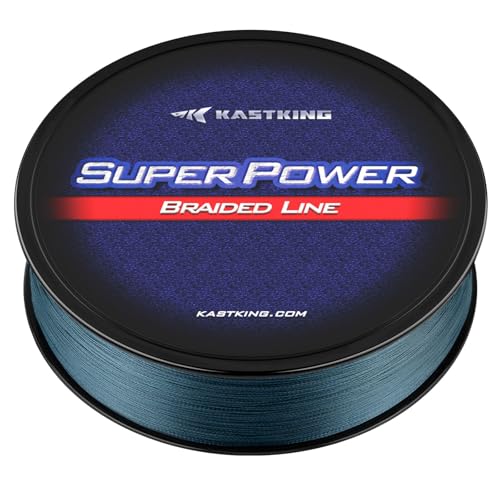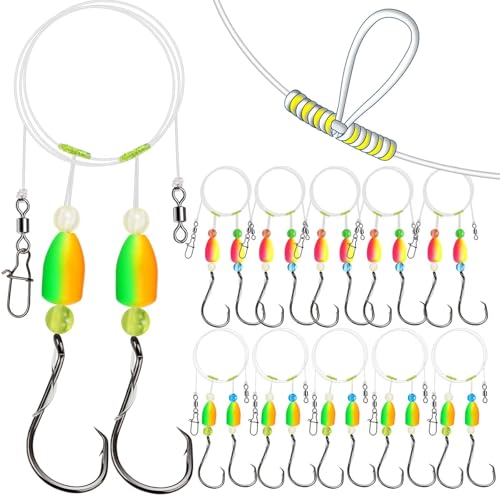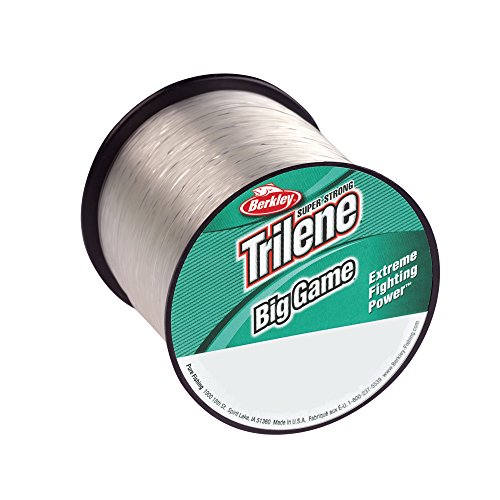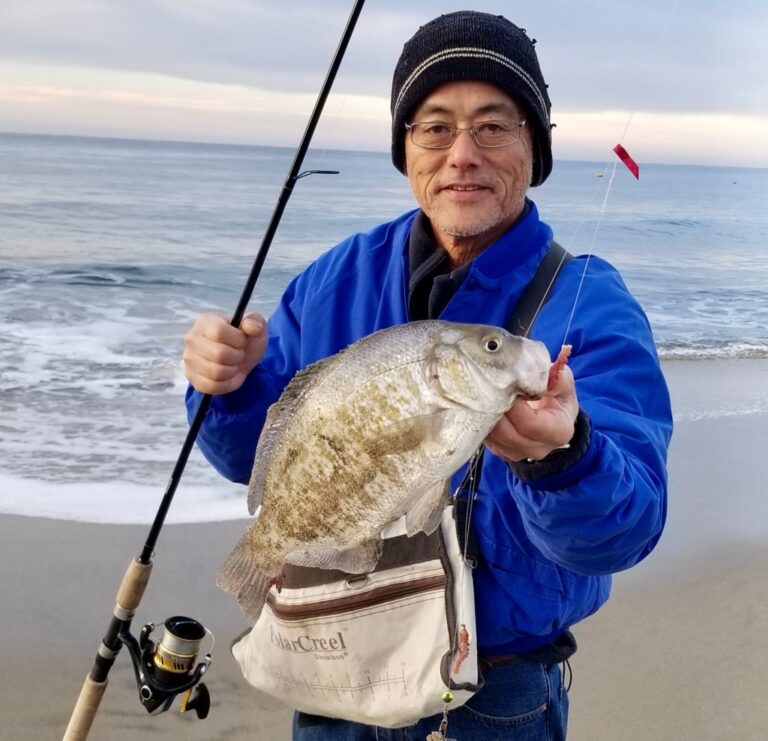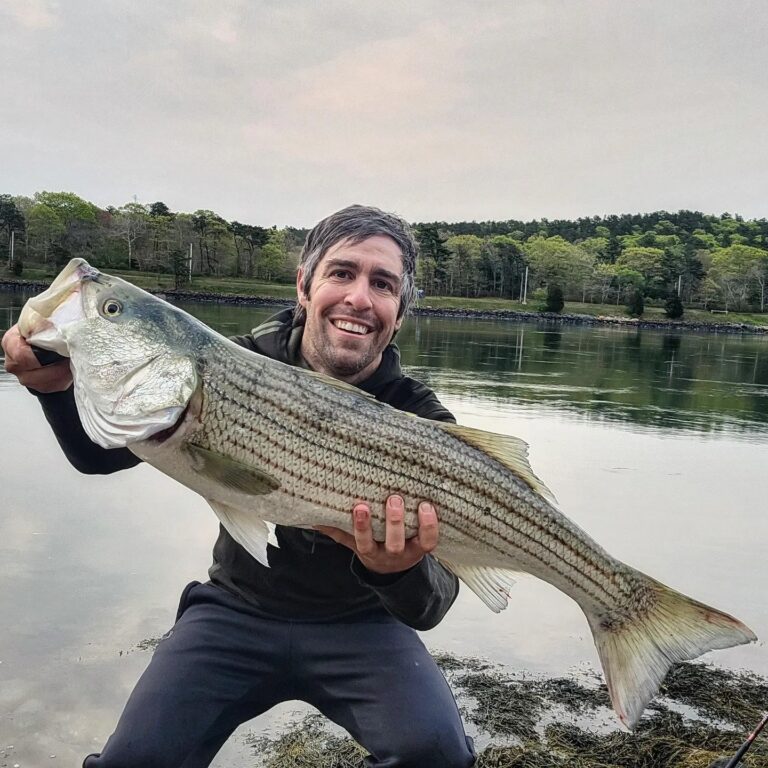To handle surf fishing catch for release, follow these steps: gently remove the hook, minimize handling and stress, use a dehooking tool if necessary, and release the fish quickly and in a way that it can safely swim away. When surf fishing, your focus should be on catch and release to contribute to the conservation of fish populations and their habitats.
Surf fishing is a thrilling and popular activity, but it is essential to prioritize the well-being of the fish caught. Catch and release practices can help maintain healthy fish populations and preserve the natural ecosystem. This article will guide you on how to handle surf fishing catch for release, ensuring minimal harm to the fish and promoting their survival.
By properly removing the hook, minimizing handling, and releasing the fish quickly, you can play your part in maintaining the delicate balance of marine life. Let’s dive into these simple yet effective techniques for responsibly managing your surf fishing catch.
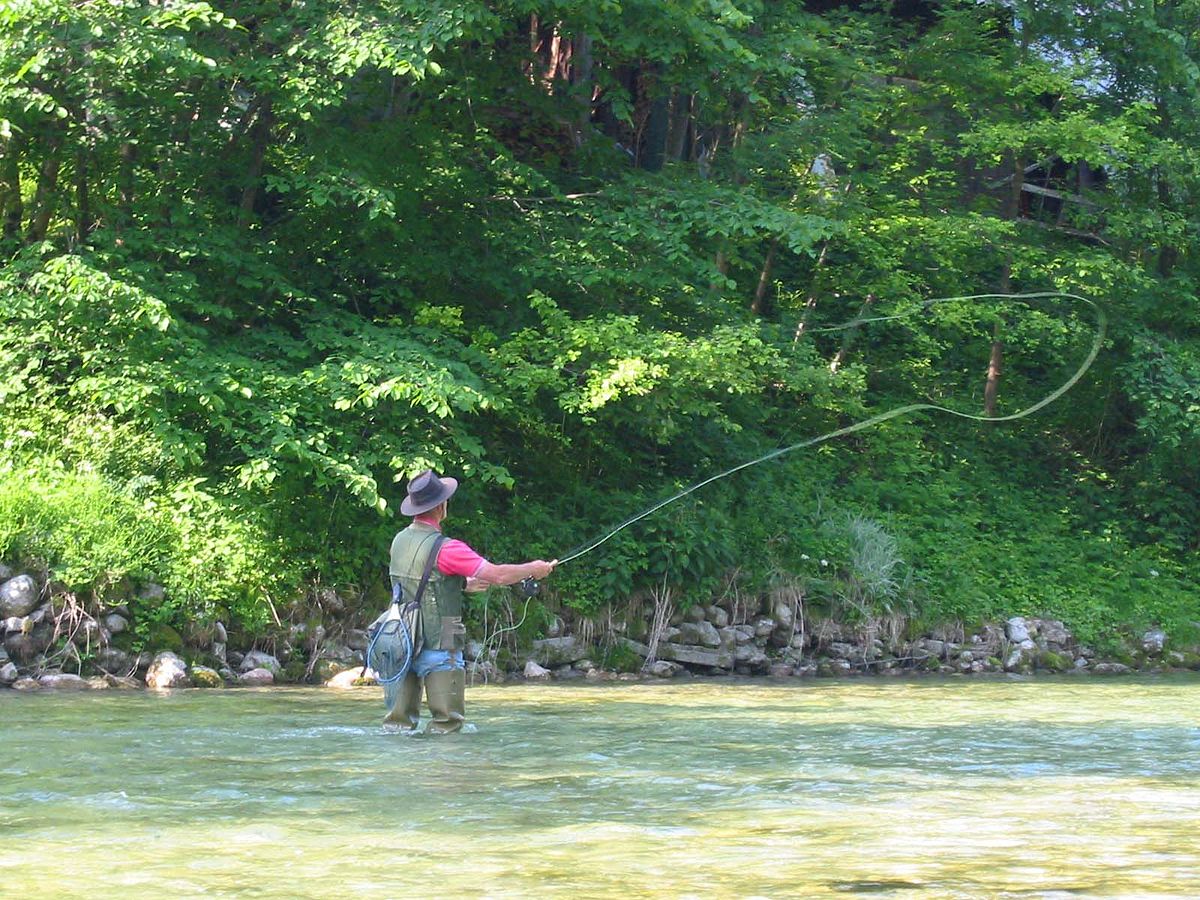
Credit: en.wikipedia.org
Understanding The Basics Of Surf Fishing
Surf fishing can be an exhilarating and rewarding experience for anglers of all skill levels. Whether you’re a beginner or a seasoned pro, understanding the basics of surf fishing is essential to increase your chances of success. In this section, we’ll explore how to choose the right location, determine the best surf fishing spots, and master surf fishing techniques.
So let’s dive in!
Choosing The Right Location
When it comes to surf fishing, location is everything. Here are some key points to consider when choosing the right spot:
- Look for areas with structure: Rocks, jetties, and sandbars provide ideal hiding spots for fish.
- Pay attention to the tide: Different species of fish prefer certain tide conditions, so understanding how tides affect feeding patterns can greatly increase your chances of a successful catch.
- Consider the weather conditions: Wind direction, wave size, and water clarity can all impact the fishing conditions. Be sure to check the weather forecast before heading out.
Determining The Best Surf Fishing Spots
Now that you know what to look for in a location, let’s talk about finding the best surf fishing spots. Here are some tips:
- Look for baitfish: Where there’s bait, there are usually predators nearby. Keep an eye out for schools of baitfish swimming close to the shore.
- Research local fishing reports: Online forums, fishing magazines, and local bait and tackle shops can provide valuable insights into where the fish are biting.
- Observe other anglers: Pay attention to where other surf fishermen are casting their lines. They might be onto something!
Factors To Consider When Selecting A Location
Choosing the right location involves considering various factors that can greatly impact your fishing experience. Here are a few things to keep in mind:
- Accessibility: Make sure the spot you choose is easily accessible and safe to fish from.
- Regulations: Familiarize yourself with local fishing regulations and catch limits to ensure you’re fishing within the legal boundaries.
- Time of day: The time of day can affect fish activity. Generally, early mornings and evenings tend to be the most productive.
Essential Equipment For Surf Fishing
To get started with surf fishing, here’s the essential equipment you’ll need:
- Fishing rod and reel selection: Opt for a medium to heavy action fishing rod and a reel with a good drag system to handle the larger fish you might encounter in the surf.
- Tackle and bait recommendations: Some popular choices include spoons, jigs, topwater plugs, and live or cut bait like shrimp, sand fleas, or squid. Experiment with different tackle and bait to see what works best in your area.
Mastering Surf Fishing Techniques
Apart from finding the right location and having the right gear, mastering surf fishing techniques is crucial for a successful outing. Here are a couple of techniques to get you started:
- Casting techniques for maximum distance: Practice your casting technique to achieve maximum casting distance. Long casts allow you to reach areas where fish might be feeding.
- Reading the waves and currents: Understanding how waves and currents work is vital in locating fish. Look for areas where waves break irregularly or form rip currents, as these can create feeding opportunities for fish.
With these basics covered, you’re well on your way to becoming a competent surf fisherman. Remember, practice makes perfect, so get out there, enjoy the ocean breeze, and keep learning from each fishing trip. Happy surf fishing!
Best Practices For Catch And Release In Surf Fishing
Handling fish properly:
- When handling a fish, be gentle and avoid touching the sensitive gills or eyes.
- Wet your hands before touching the fish to prevent damaging their protective slime coating.
- Keep the fish in the water as much as possible to minimize stress.
Minimizing stress on the fish:
- Avoid keeping the fish out of the water for extended periods.
- Use a landing net to bring the fish in quickly and safely.
- Limit handling and minimize the time it takes to release the fish.
Using appropriate fishing gear:
- Use a proper tackle that matches the size of the fish you are targeting.
- Use barbless hooks to make it easier to release the fish without causing harm.
- Avoid using oversized or heavy gear that can exhaust the fish before releasing.
Safe hook removal:
- Use pliers or a hook remover to safely remove the hook from the fish’s mouth.
- Do not pull on the line or force the hook out, as it can cause injury to the fish.
- If the hook is deeply embedded, cut the line close to the hook to minimize damage.
Tools and techniques for safe hook removal:
- Carry a hook remover or a pair of long-nose pliers in your tackle box.
- Use a dehooking tool to minimize damage to the fish and improve the release process.
- If the fish has swallowed the hook deeply, consider cutting the line near the hook to release it.
Preventing injuries to the fish:
- Avoid using excessive force when handling or releasing the fish.
- Handle the fish with wet hands or use a wet rag to reduce the risk of injury.
- Keep the fish in the water during the release process to prevent unnecessary injury.
Using proper fishing techniques:
- Practice proper catch and release methods from the moment you hook the fish.
- Minimize fight time to reduce stress and exhaustion for the fish.
- Do not play the fish to exhaustion; it weakens them and makes recovery difficult.
Using barbed or barbless hooks:
- Barbless hooks are easier to remove and cause less damage to the fish.
- If using barbed hooks, consider crimping the barb to make it easier to release.
- Check local regulations as some areas require the use of barbless hooks.
Avoiding deep hooking:
- Ensure that you are using the right hook size for the fish you are targeting.
- Pay attention to the fish’s behavior; if it is swallowing the bait, reel in slowly.
- If you deep hook a fish, cut the line close to the hook and leave it in the fish’s mouth to minimize damage.
By following these best practices for catch and release in surf fishing, you can help protect the fish population and contribute to conservation efforts. Handling fish properly, using appropriate fishing gear, safe hook removal, and avoiding injuries are all essential steps in promoting the well-being of the fish you catch and release.
Remember to always prioritize the health and safety of the fish, allowing future anglers to enjoy the thrill of surf fishing.
The Importance Of Conservation In Surf Fishing
Surf fishing is not just about catching fish; it’s also about preserving fish populations and promoting sustainable fishing practices. Conservation plays a crucial role in ensuring that our ocean ecosystems remain healthy and abundant for future generations. By practicing ethical fishing, following regulations and guidelines, educating others, contributing to research and conservation efforts, participating in citizen science programs, and supporting organizations that promote marine conservation, surf anglers can make a significant impact.
Let’s explore the different ways we can prioritize conservation in surf fishing and protect our precious marine resources.
Understanding The Role Of Catch And Release
- Catch and release is a crucial practice that helps maintain fish populations and ensure their survival.
- When you release a fish back into the water, it has a chance to reproduce and contribute to the sustainability of the species.
- It allows for anglers to enjoy the thrill of the catch while minimizing the impact on fish populations.
Preserving Fish Populations For Future Generations
- Overfishing and habitat destruction can have detrimental effects on fish populations.
- By practicing catch and release, we can help preserve fish populations and ensure their abundance for future generations.
- By allowing fish to grow and reproduce, we contribute to the overall health and sustainability of the ecosystem.
Promoting Sustainable Fishing Practices
- Sustainable fishing practices focus on minimizing the impact on fish populations and their habitats.
- Using barbless hooks, fishing with appropriate gear, and releasing undersized or protected species are all part of sustainable fishing practices.
- We should aim to leave the fishing spots cleaner than we found them, taking care not to leave any trash or debris behind.
Practicing Ethical Fishing
- Ethical fishing involves treating fish with respect and minimizing their stress while handling them.
- Avoid keeping more fish than you need or can responsibly consume.
- Use appropriate handling techniques, such as wetting your hands before touching the fish and avoiding dragging them across the sand or rocks.
Following Fishing Regulations And Guidelines
- Fishing regulations and guidelines are in place to protect fish populations and ensure sustainable harvest.
- Be familiar with the local fishing regulations, including size limits, bag limits, and protected species.
- Understand the specific rules for the area you are fishing to avoid penalties and minimize harm to the ecosystem.
Educating Others About Responsible Fishing
- Spreading awareness about responsible fishing practices can have a significant impact on conservation.
- Share your knowledge and experiences with fellow anglers, friends, and family.
- Emphasize the importance of catch and release, following regulations, and practicing sustainable fishing techniques.
Contributing To Research And Conservation Efforts
- Getting involved in research and conservation projects allows anglers to contribute directly to the preservation of fish populations.
- Report your catch data to relevant organizations or participate in tagging programs to help scientists gather essential information.
- Support research initiatives that aim to understand and protect our marine ecosystems.
Participating In Citizen Science Programs
- Many citizen science programs exist that allow anglers to contribute to scientific knowledge and conservation efforts.
- These programs often involve collecting data on fish populations, habitat conditions, and environmental factors.
- By becoming citizen scientists, anglers can actively contribute to the understanding and conservation of fish and their habitats.
Supporting Organizations That Promote Marine Conservation
- Numerous organizations dedicate their efforts to marine conservation, advocating for the protection of fish populations and their habitats.
- Consider supporting these organizations through donations or volunteering your time.
- Your contributions can help fund research, education programs, and conservation projects that benefit our oceans.
Conservation is an integral part of surf fishing. By understanding the role of catch and release, preserving fish populations, promoting sustainable fishing practices, practicing ethical fishing, following fishing regulations and guidelines, educating others, contributing to research and conservation efforts, participating in citizen science programs, and supporting organizations that promote marine conservation, surf anglers can make a significant difference in protecting our precious marine resources for generations to come.
Conclusion
In this blog post, we have explored the importance of handling surf fishing catch for release. By following the guidelines and techniques provided, you can ensure the well-being and survival of the fish you catch. Utilizing proper equipment such as de-hookers and wet hands, along with practicing gentle handling and minimizing air exposure, will greatly increase the chances of a successful release.
Remember to always be mindful of the ecosystem and its delicate balance. By releasing fish responsibly, you are not only preserving the species but also maintaining the health of the entire marine environment. So, next time you head out for a day of surf fishing, keep these tips in mind and leave a positive impact on the ocean ecosystem.
Let’s work together to protect and sustain our precious fish populations for generations to come.

